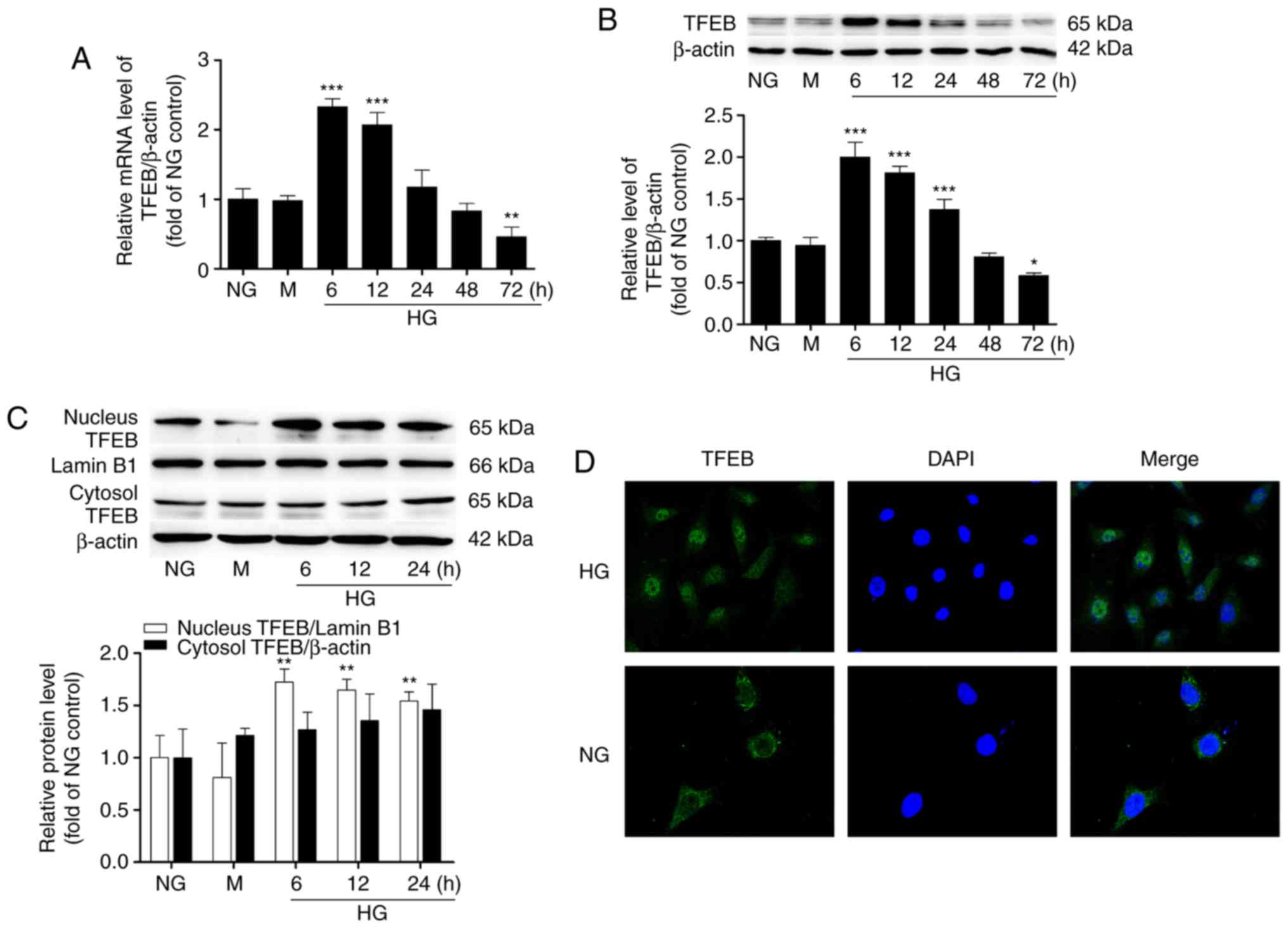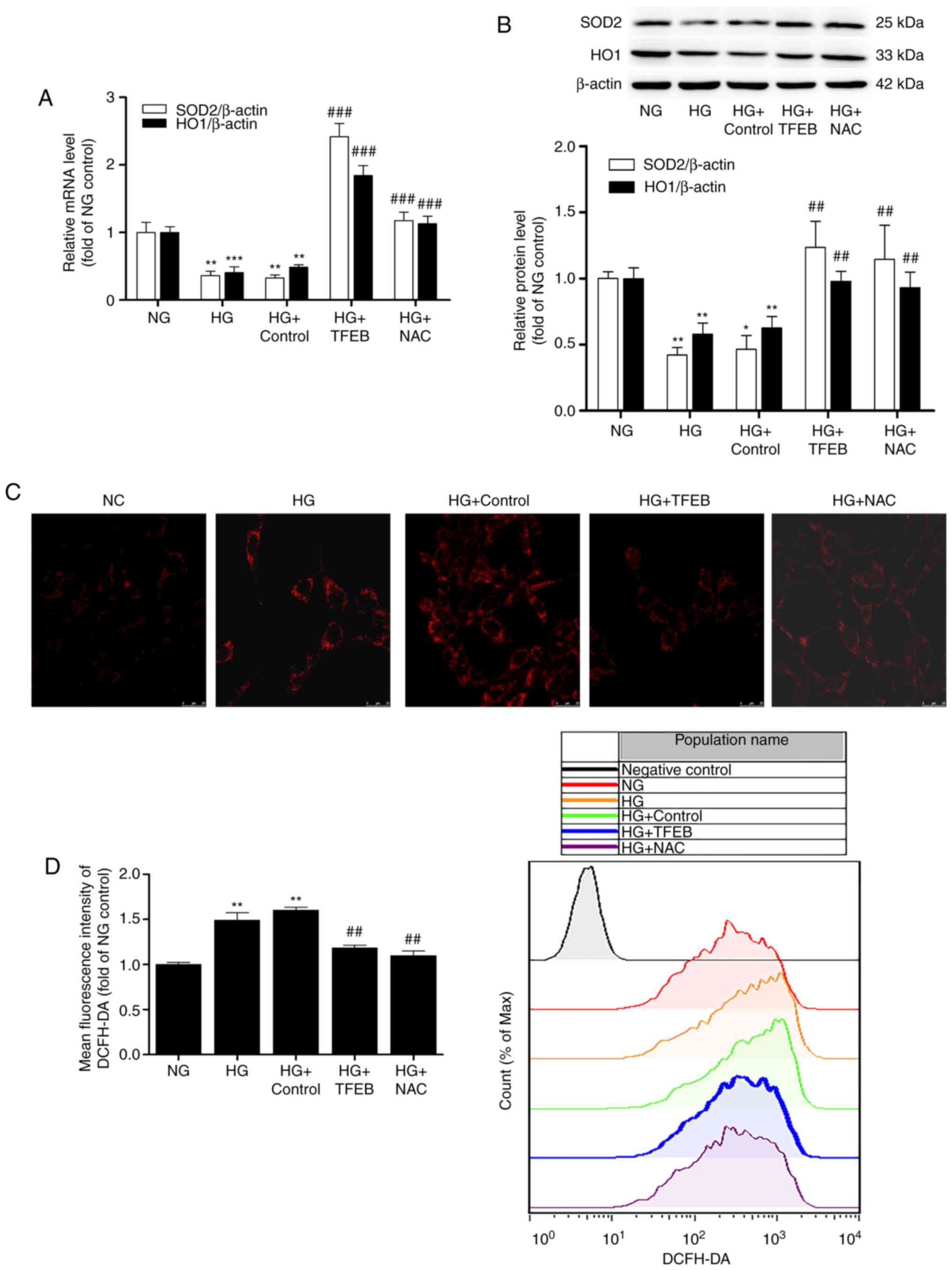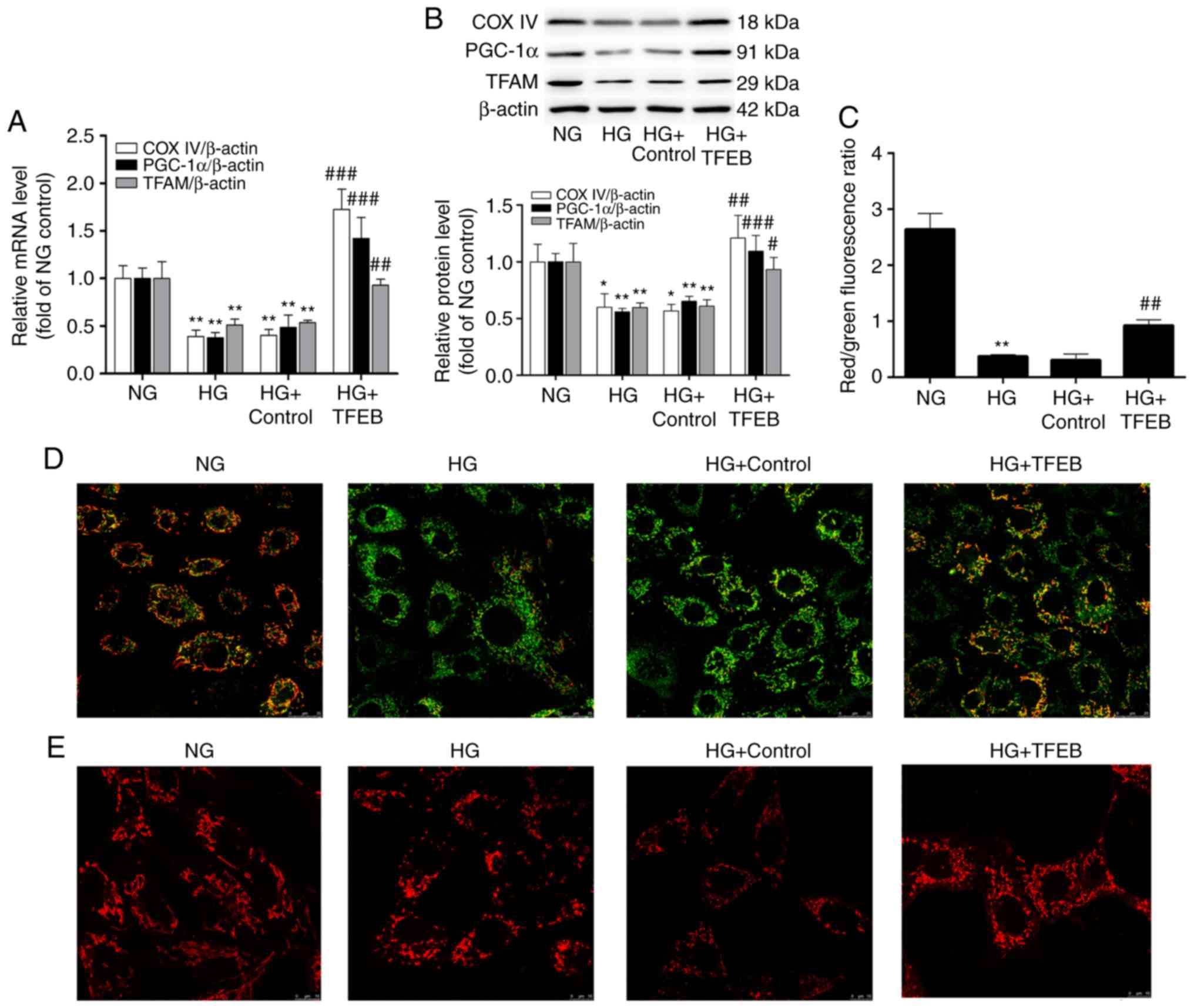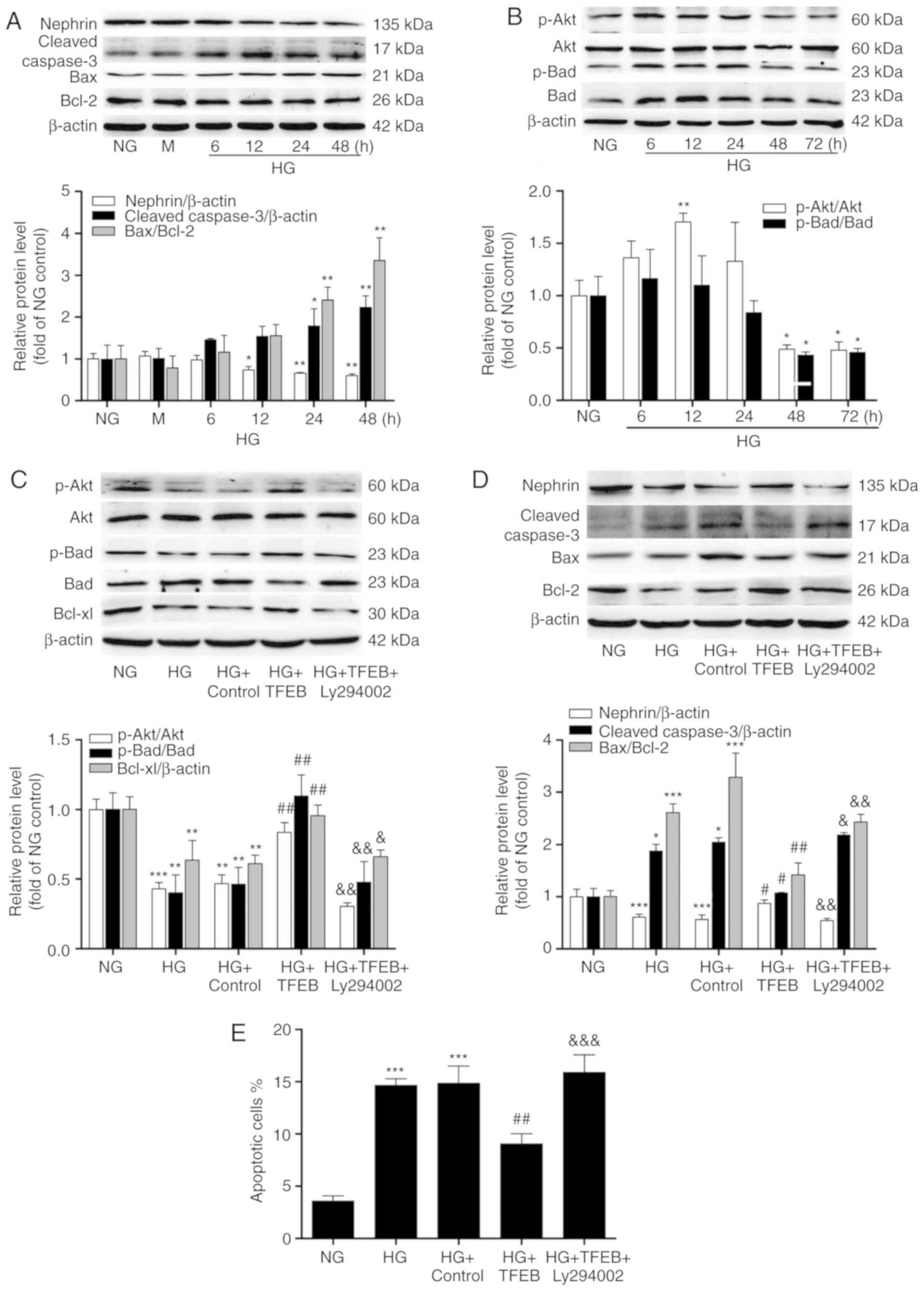|
1
|
Afkarian M, Sachs MC, Kestenbaum B, Hirsch
IB, Tuttle KR, Himmelfarb J and de Boer IH: Kidney disease and
increased mortality risk in type 2 diabetes. J Am Soc Nephrol.
24:302–308. 2013. View Article : Google Scholar : PubMed/NCBI
|
|
2
|
Collins AJ, Foley RN, Chavers B,
Gilbertson D, Herzog C, Ishani A, Johansen K, Kasiske BL, Kutner N,
Liu J, et al: US Renal Data System 2013 Annual Data Report. Am J
Kidney Dis. 63:A72014. View Article : Google Scholar
|
|
3
|
Ogurtsova K, da Rocha Fernandes JD, Huang
Y, Linnenkamp U, Guariguata L, Cho NH, Cavan D, Shaw JE and
Makaroff LE: IDF Diabetes Atlas: Global estimates for the
prevalence of diabetes for 2015-2040. Diabetes Res Clin Pract.
128:40–50. 2017. View Article : Google Scholar : PubMed/NCBI
|
|
4
|
Kawakami T, Ren S and Duffield JS: Wnt
signalling in kidney diseases: Dual roles in renal injury and
repair. J Pathol. 229:221–231. 2013. View Article : Google Scholar
|
|
5
|
Conti S, Perico N, Novelli R, Carrara C,
Benigni A and Remuzzi G: Early and late scanning electron
microscopy findings in diabetic kidney disease. Sci Rep.
8:49092018. View Article : Google Scholar
|
|
6
|
Khazim K, Gorin Y, Cavaglieri RC, Abboud
HE and Fanti P: The antioxidant silybin prevents high
glucose-induced oxidative stress and podocyte injury in vitro and
in vivo. Am J Physiol Renal Physiol. 305:F691–F700. 2013.
View Article : Google Scholar : PubMed/NCBI
|
|
7
|
Newsholme P, Haber EP, Hirabara SM,
Rebelato EL, Procopio J, Morgan D, Oliveira-Emilio HC, Carpinelli
AR and Curi R: Diabetes associated cell stress and dysfunction:
Role of mitochondrial and non-mitochondrial ROS production and
activity. J Physiol. 583:9–24. 2007. View Article : Google Scholar : PubMed/NCBI
|
|
8
|
Claussen AD, Fox DJ, Yu XC, Meech RP,
Verhulst SJ, Hargrove TL and Campbell KC: D-methionine pre-loading
reduces both noise-induced permanent threshold shift and outer hair
cell loss in the chinchilla. Int J Audiol. 52:801–807. 2013.
View Article : Google Scholar : PubMed/NCBI
|
|
9
|
Tsukagoshi H, Busch W and Benfey PN:
Transcriptional regulation of ROS controls transition from
proliferation to differentiation in the root. Cell. 143:606–616.
2010. View Article : Google Scholar : PubMed/NCBI
|
|
10
|
Fubini B and Hubbard A: Reactive oxygen
species (ROS) and reactive nitrogen species (RNS) generation by
silica in inflammation and fibrosis. Free Radic Biol Med.
34:1507–1516. 2003. View Article : Google Scholar : PubMed/NCBI
|
|
11
|
Yang HW, Hwang KJ, Kwon HC, Kim HS, Choi
KW and Oh KS: Detection of reactive oxygen species (ROS) and
apoptosis in human fragmented embryos. Hum Reprod. 13:998–1002.
1998. View Article : Google Scholar : PubMed/NCBI
|
|
12
|
Brownlee M: Biochemistry and molecular
cell biology of diabetic complications. Nature. 414:813–820. 2001.
View Article : Google Scholar : PubMed/NCBI
|
|
13
|
Kim WH, Lee JW, Suh YH, Hong SH, Choi JS,
Lim JH, Song JH, Gao B and Jung MH: Exposure to chronic high
glucose induces beta-cell apoptosis through decreased interaction
of glucokinase with mitochondria: Downregulation of glucokinase in
pancreatic beta-cells. Diabetes. 54:2602–2611. 2005. View Article : Google Scholar : PubMed/NCBI
|
|
14
|
Steingrimsson E, Copeland NG and Jenkins
NA: Melanocytes and the microphthalmia transcription factor
network. Annu Rev Genet. 38:365–411. 2004. View Article : Google Scholar : PubMed/NCBI
|
|
15
|
Sardiello M, Palmieri M, di Ronza A,
Medina DL, Valenza M, Gennarino VA, Di Malta C, Donaudy F, Embrione
V, Polishchuk RS, et al: A gene network regulating lysosomal
biogenesis and function. Science. 325:473–477. 2009. View Article : Google Scholar : PubMed/NCBI
|
|
16
|
Settembre C, Di Malta C, Polito VA, Garcia
Arencibia M, Vetrini F, Erdin S, Erdin SU, Huynh T, Medina D,
Colella P, et al: TFEB links autophagy to lysosomal biogenesis.
Science. 332:1429–1433. 2011. View Article : Google Scholar : PubMed/NCBI
|
|
17
|
Ivankovic D, Chau KY, Schapira AH and Gegg
ME: Mitochondrial and lysosomal biogenesis are activated following
PINK1/parkin-mediated mitophagy. J Neurochem. 136:388–402. 2016.
View Article : Google Scholar
|
|
18
|
Erlich AT, Brownlee DM, Beyfuss K and Hood
DA: Exercise induces TFEB expression and activity in skeletal
muscle in a PGC-1α-dependent manner. Am J Physiol Cell Physiol.
314:C62–C72. 2018. View Article : Google Scholar
|
|
19
|
Martina JA, Diab HI, Brady OA and
Puertollano R: TFEB and TFE3 are novel components of the integrated
stress response. EMBO J. 35:479–495. 2016. View Article : Google Scholar : PubMed/NCBI
|
|
20
|
Pastore N, Brady OA, Diab HI, Martina JA,
Sun L, Huynh T, Lim JA, Zare H, Raben N, Ballabio A and Puertollano
R: TFEB and TFE3 cooperate in the regulation of the innate immune
response in activated macrophages. Autophagy. 12:1240–1258. 2016.
View Article : Google Scholar : PubMed/NCBI
|
|
21
|
Peres GB, Schor N and Michelacci YM:
Impact of high glucose and AGEs on cultured kidney-derived cells.
Effects on cell viability, lysosomal enzymes and effectors of cell
signaling pathways. Biochimie. 135:137–148. 2017. View Article : Google Scholar : PubMed/NCBI
|
|
22
|
Alghamdi TA, Majumder S, Thieme K, Batchu
SN, White KE, Liu Y, Brijmohan AS, Bowskill BB, Advani SL, Woo M
and Advani A: Janus kinase 2 regulates transcription factor EB
expression and autophagy completion in glomerular podocytes. J Am
Soc Nephrol. 28:2641–2653. 2017. View Article : Google Scholar : PubMed/NCBI
|
|
23
|
Covington MD and Schnellmann RG: Chronic
high glucose downregulates mitochondrial calpain 10 and contributes
to renal cell death and diabetes-induced renal injury. Kidney Int.
81:391–400. 2012. View Article : Google Scholar
|
|
24
|
Hou Y, Wu M, Wei J, Ren Y, Du C, Wu H, Li
Y and Shi Y: CD36 is involved in high glucose-induced epithelial to
mesenchymal transition in renal tubular epithelial cells. Biochem
Biophys Res Commun. 468:281–286. 2015. View Article : Google Scholar : PubMed/NCBI
|
|
25
|
Ito Y, Hsu MF, Bettaieb A, Koike S, Mello
A, Calvo-Rubio M, Villalba JM and Haj FG: Protein tyrosine
phosphatase 1B deficiency in podocytes mitigates
hyperglycemia-induced renal injury. Metabolism. 76:56–69. 2017.
View Article : Google Scholar : PubMed/NCBI
|
|
26
|
Livak KJ and Schmittgen TD: Analysis of
relative gene expression data using real-time quantitative PCR and
the 2(−Delta Delta C(T)) Method. Methods. 25:402–408. 2001.
View Article : Google Scholar
|
|
27
|
Trivedi PC, Bartlett JJ, Perez LJ, Brunt
KR, Legare JF, Hassan A, Kienesberger PC and Pulinilkunnil T:
Glucolipotoxicity diminishes cardiomyocyte TFEB and inhibits
lysosomal autophagy during obesity and diabetes. Biochim Biophys
Acta. 1861:1893–1910. 2016. View Article : Google Scholar : PubMed/NCBI
|
|
28
|
Tseng HHL, Vong CT, Kwan YW, Lee SM and
Hoi MPM: Lysosomal Ca2+ signaling regulates high
glucose-mediated interleukin-1β secretion via transcription factor
EB in human monocytic cells. Front Immunol. 8:11612017. View Article : Google Scholar
|
|
29
|
Zhang X, Cheng X, Yu L, Yang J, Calvo R,
Patnaik S, Hu X, Gao Q, Yang M, Lawas M, et al: MCOLN1 is a ROS
sensor in lysosomes that regulates autophagy. Nat Commun.
7:121092016. View Article : Google Scholar : PubMed/NCBI
|
|
30
|
Yoneshima E, Okamoto K, Sakai E,
Nishishita K, Yoshida N and Tsukuba T: The transcription factor EB
(TFEB) regulates osteoblast differentiation through
ATF4/CHOP-dependent pathway. J Cell Physiol. 231:1321–1333. 2016.
View Article : Google Scholar
|
|
31
|
Lu H, Fan Y, Qiao C, Liang W, Hu W, Zhu T,
Zhang J and Chen YE: TFEB inhibits endothelial cell inflammation
and reduces atherosclerosis. Sci Signal. 10:2017. View Article : Google Scholar
|
|
32
|
Ma X, Liu H, Murphy JT, Foyil SR, Godar
RJ, Abuirqeba H, Weinheimer CJ, Barger PM and Diwan A: Regulation
of the transcription factor EB-PGC1α axis by beclin-1 controls
mitochondrial quality and cardiomyocyte death under stress. Mol
Cell Biol. 35:956–976. 2015. View Article : Google Scholar : PubMed/NCBI
|
|
33
|
Aquilano K, Vigilanza P, Baldelli S,
Pagliei B, Rotilio G and Ciriolo MR: Peroxisome
proliferator-activated receptor gamma co-activator 1alpha
(PGC-1alpha) and sirtuin 1 (SIRT1) reside in mitochondria: Possible
direct function in mitochondrial biogenesis. J Biol Chem.
285:21590–21599. 2010. View Article : Google Scholar : PubMed/NCBI
|
|
34
|
Zsengellér ZK and Rosen S: The use of
cytochrome C oxidase enzyme activity and immunohistochemistry in
defining mitochondrial injury in kidney disease. J Histochem
Cytochem. 64:546–555. 2016. View Article : Google Scholar : PubMed/NCBI
|
|
35
|
Nezich CL, Wang C, Fogel AI and Youle RJ:
MiT/TFE transcription factors are activated during mitophagy
downstream of Parkin and Atg5. J Cell Biol. 210:435–450. 2015.
View Article : Google Scholar : PubMed/NCBI
|
|
36
|
Zhang X, Zhao Y, Chu Q, Wang ZY, Li H and
Chi ZH: Zinc modulates high glucose-induced apoptosis by
suppressing oxidative stress in renal tubular epithelial cells.
Biol Trace Elem Res. 158:259–267. 2014. View Article : Google Scholar : PubMed/NCBI
|
|
37
|
Zhang X, Liang D, Lian X, Jiang Y, He H,
Liang W, Zhao Y and Chi ZH: Berberine activates Nrf2 nuclear
translocation and inhibits apoptosis induced by high glucose in
renal tubular epithelial cells through a phosphatidylinositol
3-kinase/Akt-dependent mechanism. Apoptosis. 21:721–736. 2016.
View Article : Google Scholar : PubMed/NCBI
|
|
38
|
Zeng KW, Wang XM, Ko H, Kwon HC, Cha JW
and Yang HO: Hyperoside protects primary rat cortical neurons from
neurotoxicity induced by amyloid β-protein via the
PI3K/Akt/Bad/Bcl(XL)-regulated mitochondrial apoptotic pathway. Eur
J Pharmacol. 672:45–55. 2011. View Article : Google Scholar : PubMed/NCBI
|
|
39
|
Tao SC, Yuan T, Rui BY, Zhu ZZ, Guo SC and
Zhang CQ: Exosomes derived from human platelet-rich plasma prevent
apoptosis induced by glucocorticoid-associated endoplasmic
reticulum stress in rat osteonecrosis of the femoral head via the
Akt/Bad/Bcl-2 signal pathway. Theranostics. 7:733–750. 2017.
View Article : Google Scholar : PubMed/NCBI
|
|
40
|
Wang XM, Yao M, Liu SX, Hao J, Liu QJ and
Gao F: Interplay between the Notch and PI3K/Akt pathways in high
glucose-induced podocyte apoptosis. Am J Physiol Renal Physiol.
306:F205–F213. 2014. View Article : Google Scholar
|
|
41
|
Nishihama K, Yasuma T, Yano Y, D'
Alessandro-Gabazza CN, Toda M, Hinneh JA, Baffour Tonto P,
Takeshita A, Totoki T, Mifuji-Moroka R, et al: Anti-apoptotic
activity of human matrix metalloproteinase-2 attenuates diabetes
mellitus. Metabolism. 82:88–99. 2018. View Article : Google Scholar : PubMed/NCBI
|
|
42
|
Mansueto G, Armani A, Viscomi C, D'Orsi L,
De Cegli R, Polishchuk EV, Lamperti C, Di Meo I, Romanello V,
Marchet S, et al: Transcription factor EB controls metabolic
flexibility during exercise. Cell Metab. 25:182–196. 2017.
View Article : Google Scholar :
|


















